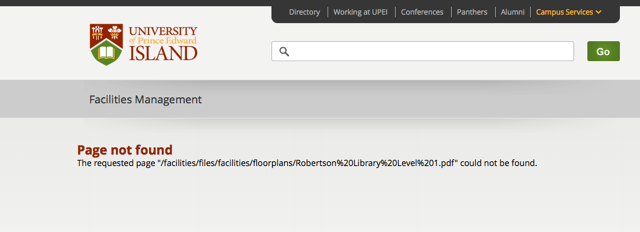Here at Robertson Library there is significant work being done on building tools to manage digital repositories. One of the challenges with this work is that, outside of the world of those who organize and archive for a living, this is an uncommon term: “Mildred, where did I put the deed for the house? It’s not in the repository” isn’t something you’re every likely to hear. (And, of course, there are all the negative associations with the word depository; they mean the same thing: “a place where things are stored.”)
Digital work is so ephemeral, so malleable, that those of us working deep within its mines rarely have cause to think about issues of preservation; we worried about “where things are stored,” but only for the moment.
But as the digital world ages and evolves, we need to start thinking harder about permanent storage, about a kind of “digital safety deposit box” where we can put things and have some confidence that they’ll be there in 25 years when we go looking for them.
This point was driven home for me this week right here on the University of PEI campus. Last week I discovered a cache of useful PDF files of campus floor plans. I used the floor plans of Robertson Library to build a digital model of the building in OpenStreetMap, and planned to return to the well to do the same for other campus buildings. When I repeated last week’s Google Search this week, though, all the links to the PDF files of floor plans were broken and returned an “Page not found” error.

Digging a little deeper I found that, rather than being a technical bug, the reason for this was that the Facilities Management section of the UPEI website had been reorganized and, while the result is much easier to use, it also meant that much of the useful reference content under the hood – everything from floor plans to campus design guidelines to maintenance manuals and procedures – disappeared.
This is why repositories are important.
Documents like building floor plans for a university campus should have a permanent, inviolable address, a digital safety deposit box where they can always be found, no matter the web design flavour of the day.
Fortunately, it is exactly that challenge that Robertson Library’s repository toolset, chiefly Islandora, is designed to solve.
Islandora, and the Fedora Commons repository software it manages, gives digital things – PDF files of floor plans, and anything else digital – a permanent, secure place to sit. With an address that doesn’t change. And a storage system designed intentionally to outlive any particular storage technology (under the hood it’s all just XML).
Ironically, given the library’s leadership as a repository tool builder, it suffers from the same tendency to use “a folder on a webserver” as a repository for its own internal documents. The archive of minutes of Library Council – core documents to the management of the library, and a vital historical resource – don’t have a home in a repository, for example, and they should.
Indeed, the history of the library itself – Robertson Library : the first twenty-five years – is just a PDF file squirreled away on a webserver. Last week when I went look for it, I found the link was broken – it pointed to a PDF file on an old version of the library website – and the only reason you can read it today is that I pointed this out to library staff and they helpfully corrected it. But the library website itself is due for a redesign, and it’s likely that once this happens this link will break again.
And that is why repositories are important.

Comments